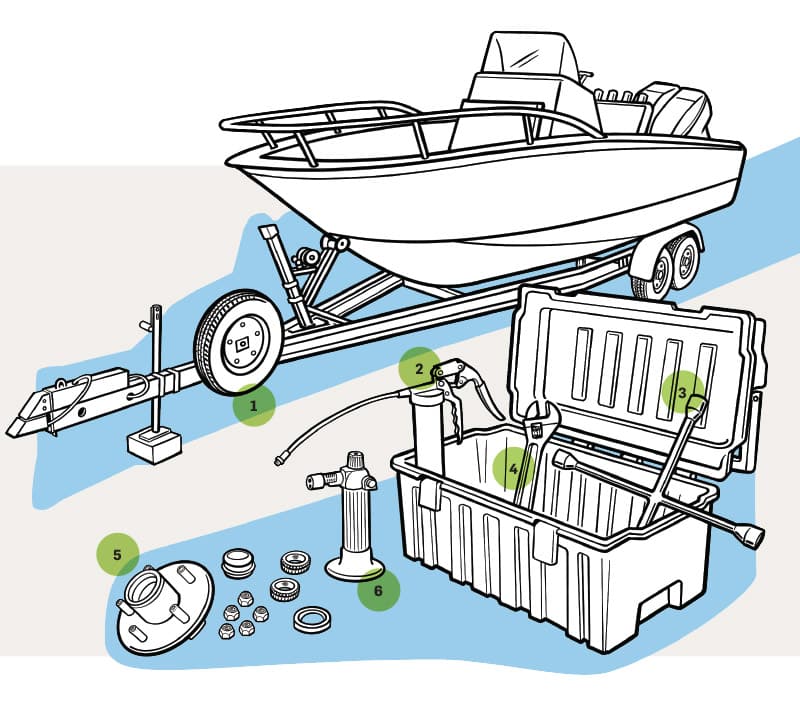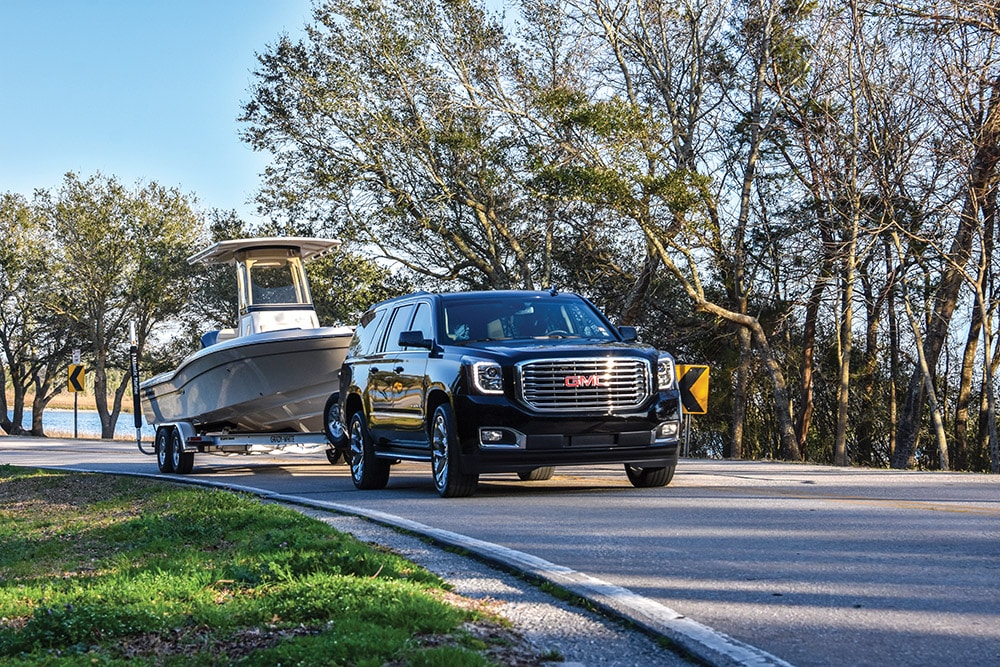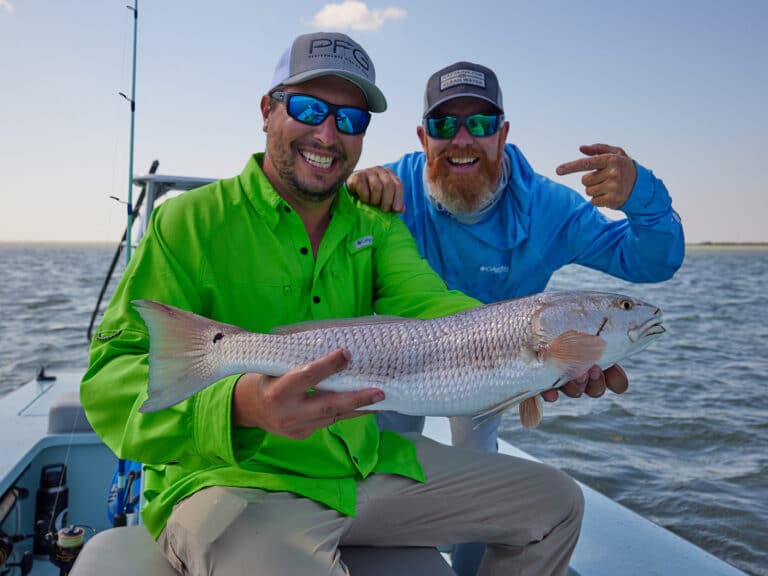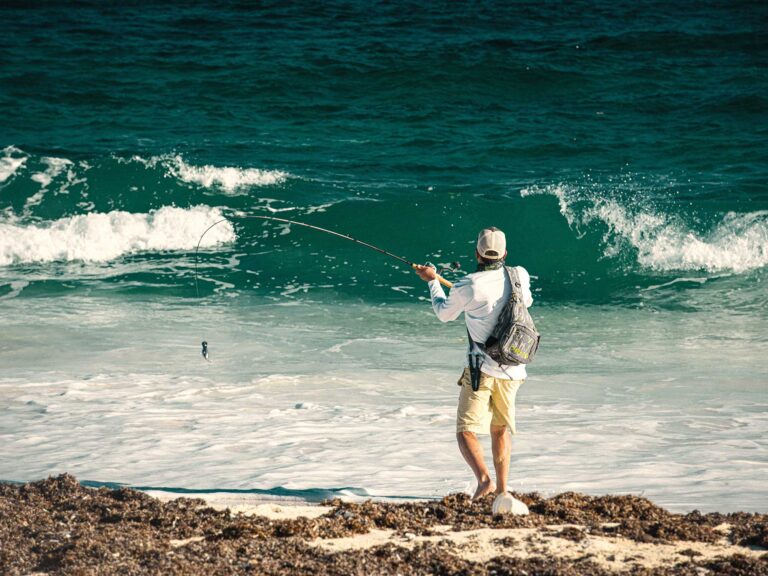
The idea of fishing somewhere new or different appeals to a lot of anglers. Traveling outside of your home waters, besides the novelty, brings new experiences and provides learning opportunities and chances to try different tactics and tackle, and sharpen skills. Pulling a boat hundreds of miles to reach a far-off destination need not be a headache, if you prepare accordingly.
Allen Grandstaff, of Fort Walton Beach, Florida, decided the best way to christen his new-to-him 2016 Pathfinder 2600 HPS was by hauling it to the Florida Keys for a short fishing trip. His frequent angling companion, John Dunphy, quickly signed on. Dunphy went to the local Department of Transportation office to purchase the $20 oversize towing permit to cover the 10-foot width of the aluminum dual-axle trailer.
In anticipation of the 1,500-plus-mile round trip, Grandstaff inspected all four trailer hubs, replaced one gouged tire, and changed the front axle brakes. He also packed a toolbox, a spare hub assembly, and a portable propane torch in case any lug nuts were frozen.
Read Next: Keep the Bugs off Your Windshield
The tow vehicle was a GMC half-ton pickup, which put the overall length of the tow vehicle and boat at 48 feet, with an overhead clearance of 13 feet, 3 inches, taking into account the boat’s upper helm station.
“We didn’t have any clearance issues going down,” Grandstaff says. “Florida law requires at least 14 feet of clearance on bridges—we researched it online beforehand—so we had plenty of leeway. Fueling on the turnpike, however, was a challenge, as we had to always use the outside end pump to have sufficient room to maneuver the length of the rig.”
The two buddies stopped three times on their way to Marathon, so the trip took a total of 14 hours.
“I only had a quarter tank of fuel in the boat to keep it light, but the truck bed and cab were loaded with coolers, clothes, food, and enough rods and tackle to fish for everything from inshore species to sailfish and wahoo offshore.”
The first leg along Interstate 10 in northern Florida is hilly. Grandstaff tried using the Overdrive setting, but ended up switching over to the Tow/Haul mode for better fuel economy. Overall, the gas mileage averaged 12 mpg. A timely smartphone search of Google Maps proved helpful for locating the next service plaza on the turnpike to avoid getting too low on fuel.
During one stop, a routine check revealed one of the transom ratchet buckles had loosened slightly from road bumps. A couple of clicks were the only adjustments necessary. “If you prep well and have the necessary backups, it’s an easy trip to make,” Grandstaff says.

Capt. Scott Null, a fly and light-tackle guide who calls Port O’Connor home, made extended jaunts from the central Texas coast to Grand Isle, Louisiana, to target winter bull reds with his clients for several seasons. He towed his East Cape Fury skiff some 540 miles each way, pulling the Ramlin single-axle trailer with his Toyota Tundra pickup.
“I drove straight through by myself, stopping only for gas along the way,” Null explains. “It’s a pretty straightforward route, with not a lot of ways to go around. I took I-10 until I reached Highway 90 in Louisiana. That’s about the halfway point, and then the road south gets messy. I’ve driven on unpaved ranch roads that are smoother than that stretch.”
Before departing, Null repacked or replaced his trailer hubs, which he does religiously on alternating years. He always carries a full toolbox, and secures his boat with a single transom strap stretched across the rear deck, in addition to the bow strap and safety chain.
Read Next: Safety Checklist for Boat Trailers
A spare trailer tire is standard, according to Null. “On one trip, I blew out a tire, so I just pulled off to the side, put on the emergency flashers, and changed the tire. Otherwise, it’s been pretty uneventful travel.” But he always stops for gas before he absolutely has to, and when he does, he checks everything to make sure nothing is broken or loose. “Once, I discovered a bolt on the jack plate had broken from too much bouncing on rough pavement,” Null explains. So, it pays to take a moment for a quick inspection.
If you have a maintenance routine and always stick to it, you’re not likely to have problems along the way. So, the next time you get the urge to fish somewhere different, break out the maps, load the tackle, make sure the boat is solidly secured on the trailer, then check hubs and tires, and hit the road. But before you go, also pack a toolbox, just in case.









